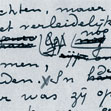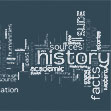Overview
Although in the early years of my research I was interested in the application and use of hypertext technology to literature education [8.1], [8.2], [8.3], [8.4], [8.10] and the general theory of hypertext and the electronic book [8.6], [8.12], my main research interests are textual criticism, scholarly editing, genetic criticism, Humanities Computing, and as one of only a few in Western Europe, Electronic Scholarly Editing applied to modern texts. Electronic Scholarly Editing stands at the crossroads of modern philology (textual criticism and scholarly editing) and computer science. Situated in the field of Humanities Computing, Electronic Scholarly Editing wants to develop and apply computational techniques to texts and works in order to gain an insight and understanding of their instability caused by their complex intra-documentary, genetic, extra-documentary, or transmissional histories. At the same time the discipline explores several possibilities to communicate the research results to a diverse audience of scholars and general readers. In its theoretical and practical activities, Electronic Scholarly Editing cannot be reduced to the application of the computer as an electronic tool to conventional editorial theories as maintained by the Anglo-American tradition, the French critique génétique and the German Editionswissenschaft. Electronic scholarly editing generates new theories of the text and of scholarly text editing which puts the conventional traditions in crisis. My research focuses both on the theoretical and on the practical side of Electronic Scholarly Editing. [7.32]
The computer can be a useful tool for the statistical analysis of texts in the preparation of a conventional scholarly edition, as I have demonstrated in my scholarly (print) editions of works of Hugo Claus [1.1.] & [1.6], Stijn Streuvels [1.2], and Hendrik Conscience [1.4.]. These editions are the result of detailed philological studies of the extant manuscripts and printing histories and offer the reader a scholarly established text together with annotations, glosses, and textual essays on the genesis and printing history of the works. This genetic and text-critical research resulted in several (theoretical) contributions to literary scholarship and literary history [7.4], [7.16], [7.22], [7.23], [7.29] and several edited volumes of essays [5.1], [5.2], [5.3], [5.5], [5.6], [5.7].
In the Electronic Scholarly Editing part of my research I concentrate on the history of Humanities Computing in general and of Electronic Scholarly Editing in particular, the influences and usability of conventional editorial theory to the electronic paradigm, and the implications of electronic scholarly editing for conventional theory. In this research I work on text ontology; structural and semantic markup; the construction of a coherent theory of electronic editing; the theory and practice of transcription and critical and non-critical editing; the status of the variant and the invariant; the role of the scholarly editor in their interaction with the text and their audience; the social materiality of the electronic edition; and the definition of the field. Techniques of text encoding (SGML, XML, TEI, DALF, XSLT), collation, statistical analysis, data mining and extraction, and interface building are crucial points of attention together with work on fully user-generated ‘true’ electronic editions. My research introduced concepts such as orientation text, location variant, and linkemes to the field of electronic textual scholarship. [7.1], [7.3], [7.6], [7.8], [7.10], [7.13], [7.17], [7.24], [7.28], [7.31], [7.34], [7.41] The DALF project (Digital Archive of Letters in Flanders) is exemplary for the kind of work that I do. Starting from the analysis of the letters in its material appearance and of the conventional editorial theories [7.30], I defined the letter and translated this to a framework for the structural and semantic encoding of modern correspondence material [3.1]. This framework is applied to a textbase of transcribed and annotated correspondence material (currently containing more than 4,000 letters) that will generate customized non-critical user-driven scholarly editions and at the same time functions as a corpus for (socio-)linguistic, diachronic, synchronic, literary, and historical research. [7.33], [7.36], [7.40]
If texts are at the heart of the human sciences, and the use of advanced ICT (Information and Communication Technology) opens up exciting research opportunities, then Electronic Scholarly Editing provides the Humanities with a theoretical understanding of (the electronic) text and delivers the essential and practical data for that research.
Current Research
Humanities Computing and (Electronic) Textual Editing. History, Theory, Applications, and Implications
Scholarly editions in preparation
Anton Van Wilderode. De moerbeitoppen ruischten (1943): Facsimile varianteneditie
Stijn Streuvels. Heule: Tekstkritische editie
Stijn Streuvels. Werkmenschen: Tekstkritische editie






